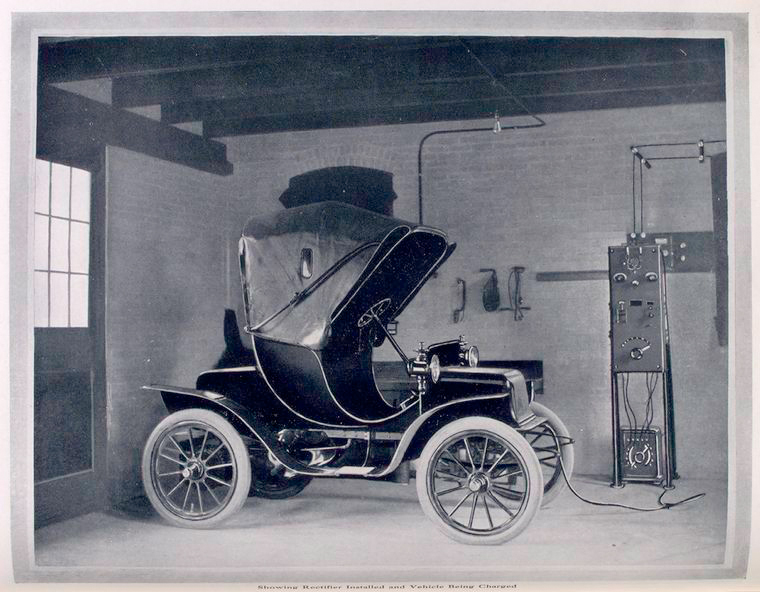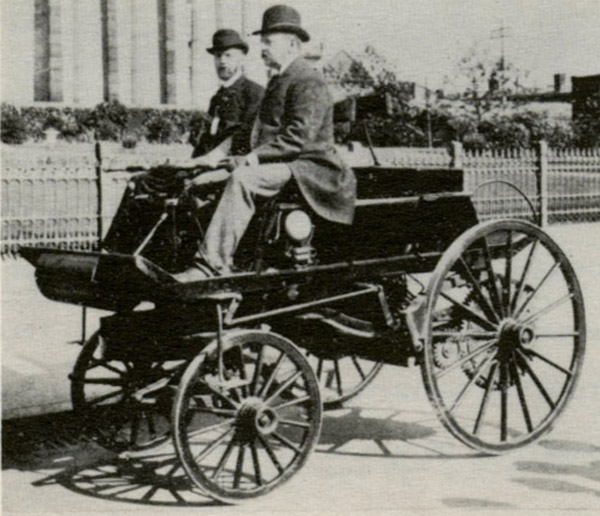Electric cars are a modern new technology, so modern and unproven that many [Republicans] would say they couldn’t possibly be plausible. Except for how they’ve actually been around since the turn of the 20th century. This photo of an electric car charging (above, click to embiggen) is from 1909, and by that point the technology was already 15 years old.
The first “Electrobat” flapped onto the streets of Gotham (uh, Philadelphia) in 1894. It “weighed 4,400 pounds and was powered by an adapted ship motor,” writes Alexis Madrigal at The Atlantic, but it’s not like gas-powered automobile technology was all that sleek. In fact, around the turn of the century, the market was evenly split between gas, electric, and horse-powered vehicles.
So what happened? Madrigal has the full story, but here’s the condensed version: The company that planned to manufacture and operate the vehicles (private ownership wasn’t a consideration — it was planned as more of an electric taxi fleet) started strong but eventually crumbled. Mismanaged vehicles and poorly trained drivers meant the service lost money everywhere outside of New York, and it never rallied. Don’t think too hard about what transportation might look like today if it had done a little better, and EVs had emerged victorious from the electric/gas/horse-driven three-way standoff.





